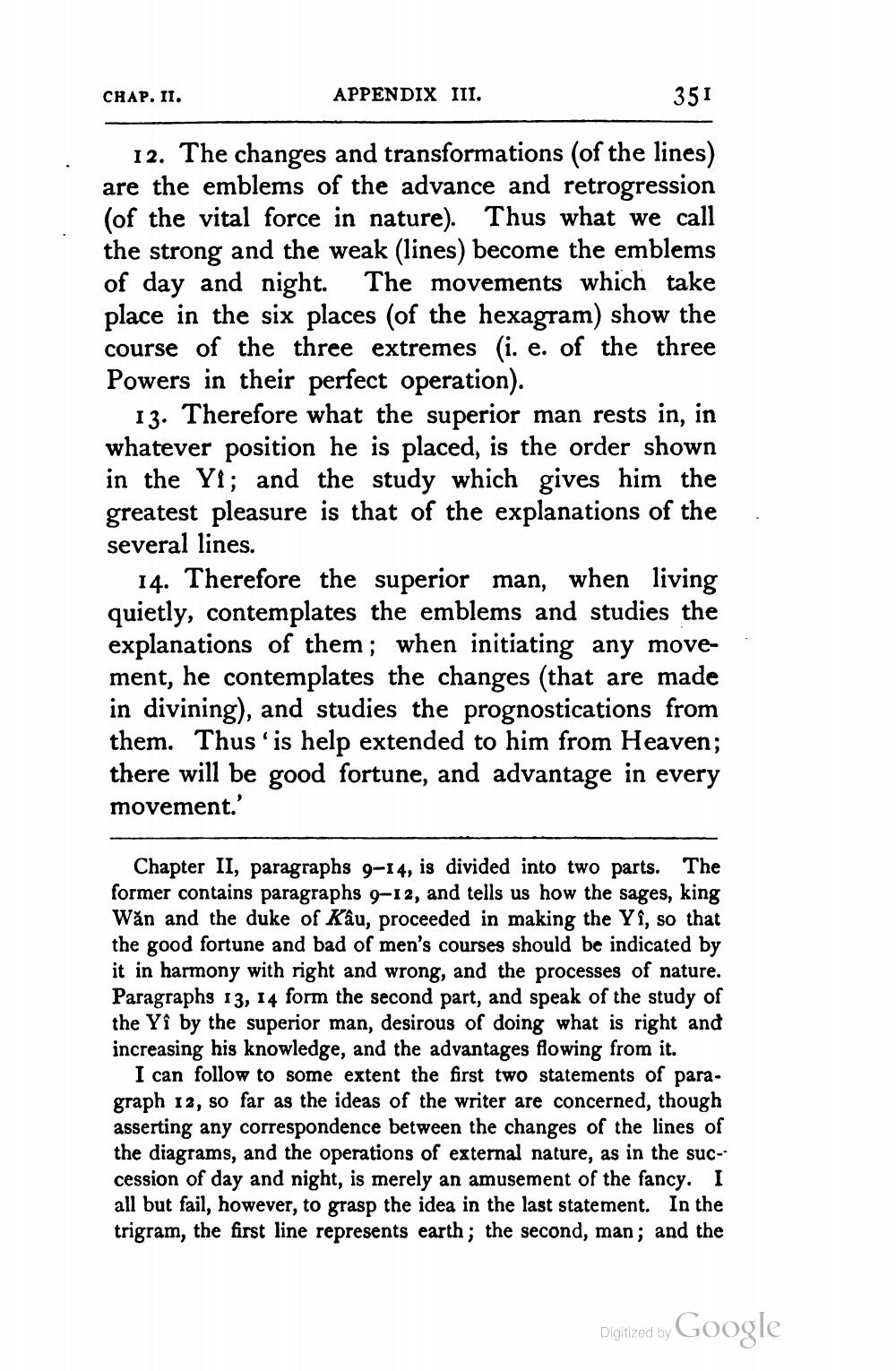________________
CHAP. II.
APPENDIX III.
351
12. The changes and transformations (of the lines) are the emblems of the advance and retrogression (of the vital force in nature). Thus what we call the strong and the weak (lines) become the emblems of day and night. The movements which take place in the six places (of the hexagram) show the course of the three extremes (i. e. of the three Powers in their perfect operation).
13. Therefore what the superior man rests in, in whatever position he is placed, is the order shown in the Yi; and the study which gives him the greatest pleasure is that of the explanations of the several lines.
14. Therefore the superior man, when living quietly, contemplates the emblems and studies the explanations of them; when initiating any movement, he contemplates the changes that are made in divining), and studies the prognostications from them. Thus'is help extended to him from Heaven; there will be good fortune, and advantage in every movement.
Chapter II, paragraphs 9-14, is divided into two parts. The former contains paragraphs 9-12, and tells us how the sages, king Wăn and the duke of Kâu, proceeded in making the Yi, so that the good fortune and bad of men's courses should be indicated by it in harmony with right and wrong, and the processes of nature. Paragraphs 13, 14 form the second part, and speak of the study of the Yi by the superior man, desirous of doing what is right and increasing his knowledge, and the advantages flowing from it.
I can follow to some extent the first two statements of paragraph 12, so far as the ideas of the writer are concerned, though asserting any correspondence between the changes of the lines of the diagrams, and the operations of external nature, as in the succession of day and night, is merely an amusement of the fancy. I all but fail, however, to grasp the idea in the last statement. In the trigram, the first line represents earth; the second, man; and the
Digitized by Google




